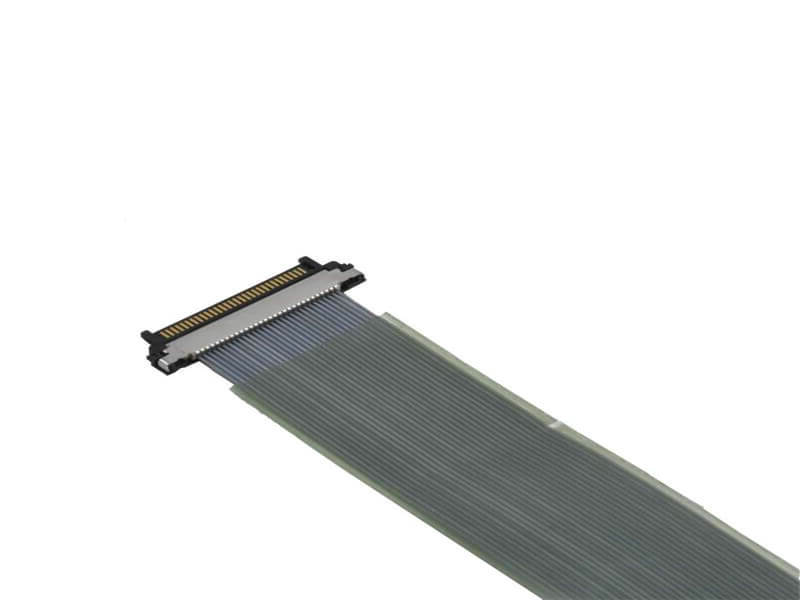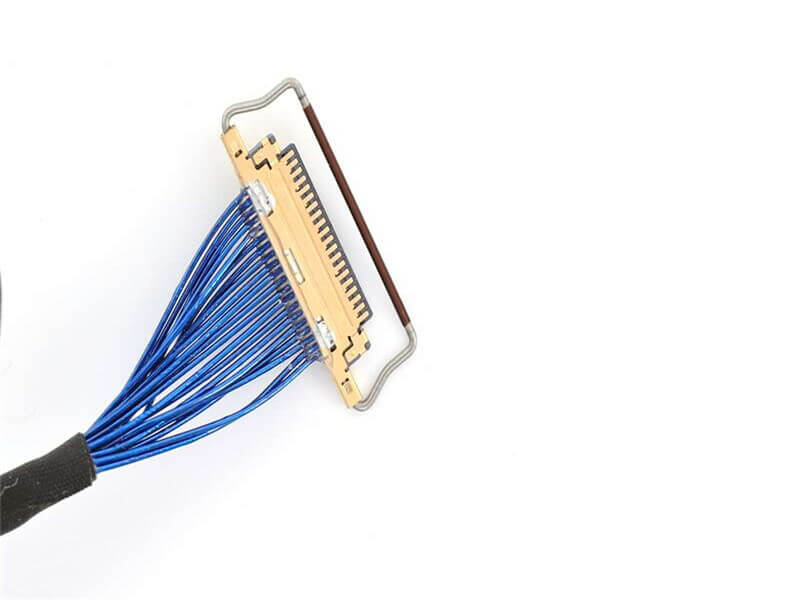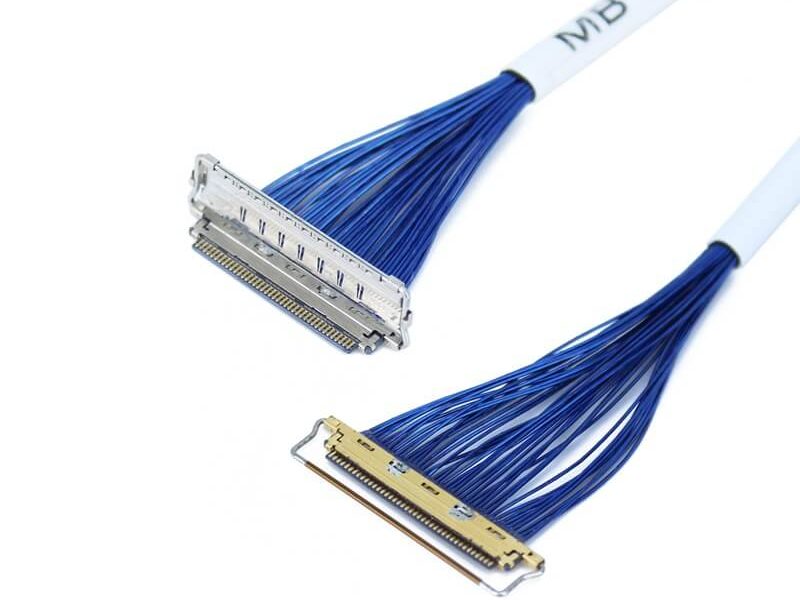Impact of Bend Radius on Signal Integrity in Micro-Coaxial Cables
- Fundamentals of Bend Radius in Micro-Coaxial Cables
A. Definition of Bend Radius
The minimum bend radius (MBR) is the smallest allowable curvature a cable can withstand without permanent deformation or electrical performance degradation. It is typically expressed as a multiple of the cable’s outer diameter (OD):
MBR=k×OD(where k=3 to 10, depending on construction)
B. Structural Vulnerabilities
Conductor Distortion: Bending compresses the inner conductor and stretches the outer shield, disrupting the coaxial geometry.
Dielectric Stress: PTFE or foam dielectric materials may crack under repeated flexing.
Shield Damage: Braided or foil shields can separate, compromising shielding effectiveness (SE).
- Key Signal Degradation Mechanisms
A. Insertion Loss Increase
Bending induces impedance mismatches, converting part of the signal into heat. Losses escalate exponentially at higher frequencies:
Bend Radius (mm) Insertion Loss at 40 GHz (dB/m)
10 (MBR = 5× OD) 0.8
6 (3× OD) 1.5
4 (2× OD) 3.2 (signal unusable)
Example: A 1.2mm cable (OD) with PTFE dielectric.
B. Voltage Standing Wave Ratio (VSWR)
Sharp bends create reflections due to impedance discontinuities, raising VSWR:
Acceptable VSWR: <1.5:1 for most RF systems.
Bent Cable VSWR: Up to 2.5:1 at 28 GHz (5G n257 band), causing beamforming errors.
C. Phase Instability
In phased array antennas, inconsistent bend radii across multiple cables introduce phase errors:
Phase Shift: Up to 15° per 90° bend at 60 GHz (WiGig applications).
Impact: Reduced beam steering accuracy in 5G mmWave base stations.
- Case Study: Catheter-Based Medical Devices
A. Challenge
A 0.8mm micro-coaxial cable in an intravascular ultrasound (IVUS) probe exhibited 40% signal loss due to tight bends (radius = 2mm) during arterial navigation.
B. Root Cause Analysis
Inner Conductor Fracture: SEM imaging revealed micro-cracks in the silver-plated copper core.
Shield Separation: The helical shield detached at bend points, reducing SE by 25 dB.
C. Solution
Redesigned Cable: Used a stranded inner conductor and double-shielded design (braid + foil).
Bend Radius Relaxation: Increased MBR from 2mm to 4mm (5× OD).
Result: Insertion loss lowered to 0.6 dB/m at 30 MHz, meeting FDA Class III device standards.
- Mitigation Strategies
A. Design Guidelines
Dynamic vs. Static Bending:
Static: MBR ≥ 5× OD (e.g., fixed routing in servers).
Dynamic: MBR ≥ 10× OD (e.g., robotic arms, folding smartphones).
Material Selection:
Inner Conductor: Stranded copper for flexibility.
Dielectric: Expanded PTFE (ePTFE) to resist cracking.
Shield: Laser-welded foil + 90% braid coverage.
B. Testing Protocols
IEC 61196-1: Flex testing (5,000 cycles at 1 Hz) to validate durability.
Time-Domain Reflectometry (TDR): Locate impedance mismatches caused by bends.
C. Routing Best Practices
Avoid Kinking: Use bend radius limiters (e.g., Sumitomo Lightwave’s FlexCore™ sleeves).
Strain Relief: Secure cables within 10 mm of connectors using epoxy or crimp sleeves.
- Industry Standards and Tolerances
Standard Application Bend Radius Requirement
IEC 61196-6 RF cables ≤ 6mm MBR ≥ 6× OD (static)
MIL-DTL-17 Military avionics MBR ≥ 8× OD (dynamic)
3GPP TR 38.825 5G mmWave FR2 (24–52 GHz) MBR ≥ 10× OD for phase stability
- Future Directions
Shape-Memory Alloys: Cables that return to original geometry after bending.
Finite Element Analysis (FEA): Predictive modeling of bend-induced stress.
Sub-0.4mm Cables: Developing liquid crystal polymer (LCP) dielectrics for 6G (100+ GHz).





